Walnuts are a popular and versatile nut, known for their rich flavor, numerous health benefits, and culinary uses. As consumers become increasingly health-conscious and seek nutritious snacks, the demand for shelled walnuts continues to rise. Understanding the pricing dynamics of shelled walnuts per pound is crucial for producers, consumers, and distributors alike. In this summary, we will explore the factors that influence shelled walnut prices, current trends in the market, and key insights to provide a comprehensive understanding of this industry. Factors Affecting Shelled Walnut Pricing: 1. Supply and Demand: The basic economic principle of supply and demand plays a significant role in shelled walnut pricing. The overall availability of shelled walnuts, influenced by factors such as weather conditions, disease outbreaks, and crop yields, impacts the supply side of the equation. Meanwhile, the demand for shelled walnuts is driven by consumer preferences, dietary trends, and international trade. Fluctuations in either supply or demand can cause changes in the price per pound of shelled walnuts. 2. Crop Quality and Size: The quality and size of shelled walnut crops directly impact pricing. Factors like kernel size, appearance, taste, and texture are crucial determinants of the market price. Generally, larger, unblemished, and superior-quality walnuts command higher prices due to their desirability among consumers and demand from industries like confectionery and bakery. 3. Global Market Dynamics: The market for shelled walnuts is not limited to a particular region. Large-scale walnut producing countries like the United States, China, Turkey, and Iran greatly influence global prices. Any disruptions in the production or distribution of walnuts from these major players can cause price volatility. Additionally, factors such as currency exchange rates, export policies, and trade agreements can affect the international market and subsequently the price per pound of shelled walnuts. 4. Processing Costs and Labor: The cost of processing shelled walnuts can also impact pricing. Labor-intensive tasks, such as hulling, drying, and shelling, add to the overall production costs. Technological advancements and efficient processing methods have helped streamline the operation, but labor costs, including wages, transportation, and facility requirements, still factor into the final price. Additionally, the cost of packaging and storage for shelled walnuts contributes to the overall pricing structure.

nut
 Trends in Shelled Walnut Pricing: 1. Rising Health Awareness: As consumers become more health-conscious, the demand for nutritious and natural food options continues to grow. Shelled walnuts, with their high omega-3 fatty acids, antioxidants, and heart-healthy properties, are sought after by health-conscious individuals. This increasing demand has led to a generally upward trend in shelled walnut prices. 2. Increasing Global Consumption: The global consumption of shelled walnuts has been steadily rising, driven by changing dietary habits, growing awareness of their health benefits, and their versatile use in various cuisines. This upward trend is particularly apparent in emerging markets such as China and India, where the rising middle-class population and increasing disposable incomes have contributed to an increased demand for shelled walnuts. Consequently, prices have shown a corresponding upward trajectory. 3. Climate Change and Natural Disasters: Climate change-related phenomena, including drought, heatwaves, and wildfires, present a significant risk to walnut production. These events can damage walnut trees, reduce yields, and lower the quality of the crop. As a result, when these natural disasters occur, the supply of shelled walnuts is disrupted, leading to a price surge due to limited availability. 4. Trade Tariffs and Political Factors: Political factors and trade tariffs can affect the global walnut market, causing price fluctuations. Disputes over trade policies and import tariffs can disrupt the flow of walnuts between countries, impacting pricing. Recent trade tensions between the United States and China, for example, have had a significant impact on the walnut industry, with price changes observed due to shifting export patterns. Insights for Market Participants: 1. Producers: Walnut growers and producers should consider factors such as crop quality, industry demand, and global market dynamics to make informed planting decisions and manage production costs efficiently. Investing in new technologies and sustainable farming practices can help increase productivity and mitigate climate-related risks. Building strong relationships with distributors and understanding global trade policies will also allow producers to navigate market uncertainties and make strategic pricing decisions. 2. Distributors and Retailers: Distributors and retailers play a crucial role in the supply chain, sourcing shelled walnuts and making them available to consumers. Building strong relationships with reliable suppliers is essential to ensure a consistent and quality supply of shelled walnuts. Monitoring market trends, international trade policies, and exchange rates can help forecast price movements and optimize stocking and pricing strategies.
Trends in Shelled Walnut Pricing: 1. Rising Health Awareness: As consumers become more health-conscious, the demand for nutritious and natural food options continues to grow. Shelled walnuts, with their high omega-3 fatty acids, antioxidants, and heart-healthy properties, are sought after by health-conscious individuals. This increasing demand has led to a generally upward trend in shelled walnut prices. 2. Increasing Global Consumption: The global consumption of shelled walnuts has been steadily rising, driven by changing dietary habits, growing awareness of their health benefits, and their versatile use in various cuisines. This upward trend is particularly apparent in emerging markets such as China and India, where the rising middle-class population and increasing disposable incomes have contributed to an increased demand for shelled walnuts. Consequently, prices have shown a corresponding upward trajectory. 3. Climate Change and Natural Disasters: Climate change-related phenomena, including drought, heatwaves, and wildfires, present a significant risk to walnut production. These events can damage walnut trees, reduce yields, and lower the quality of the crop. As a result, when these natural disasters occur, the supply of shelled walnuts is disrupted, leading to a price surge due to limited availability. 4. Trade Tariffs and Political Factors: Political factors and trade tariffs can affect the global walnut market, causing price fluctuations. Disputes over trade policies and import tariffs can disrupt the flow of walnuts between countries, impacting pricing. Recent trade tensions between the United States and China, for example, have had a significant impact on the walnut industry, with price changes observed due to shifting export patterns. Insights for Market Participants: 1. Producers: Walnut growers and producers should consider factors such as crop quality, industry demand, and global market dynamics to make informed planting decisions and manage production costs efficiently. Investing in new technologies and sustainable farming practices can help increase productivity and mitigate climate-related risks. Building strong relationships with distributors and understanding global trade policies will also allow producers to navigate market uncertainties and make strategic pricing decisions. 2. Distributors and Retailers: Distributors and retailers play a crucial role in the supply chain, sourcing shelled walnuts and making them available to consumers. Building strong relationships with reliable suppliers is essential to ensure a consistent and quality supply of shelled walnuts. Monitoring market trends, international trade policies, and exchange rates can help forecast price movements and optimize stocking and pricing strategies.
Specifications of nut
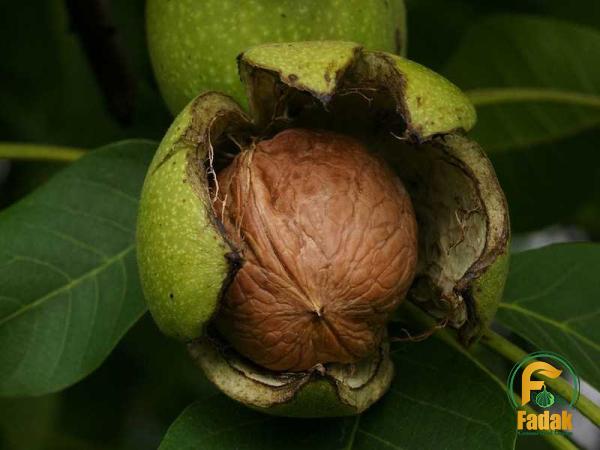 3. Consumers: Knowledge of the factors influencing shelled walnut prices can help consumers make informed purchasing decisions. Staying updated on market trends, promotional offers, and buying in bulk during harvest seasons or in times of relative abundance can help consumers secure the best prices. Additionally, being aware of regional variations in prices can allow consumers to source shelled walnuts from places where they may be more economical. Conclusion: Understanding the pricing dynamics of shelled walnuts per pound is essential for all stakeholders in the walnut industry, including producers, distributors, and consumers. Factors such as supply and demand, crop quality, international market dynamics, processing costs, and labor influence pricing structures. Key trends such as rising health awareness, increasing global consumption, climate change-related risks, and political factors contribute to price fluctuations. By considering these factors and staying informed about market insights, participants in the shelled walnut industry can make strategic decisions to thrive in a dynamic and competitive market. Understanding Shelled Walnut Pricing Per Pound: Factors, Trends, and Market Insights Introduction: Walnuts are a popular and versatile nut, known for their rich flavor, numerous health benefits, and culinary uses. As consumers become increasingly health-conscious and seek nutritious snacks, the demand for shelled walnuts continues to rise. Understanding the pricing dynamics of shelled walnuts per pound is crucial for producers, consumers, and distributors alike. In this article, we will explore the factors that influence shelled walnut prices, current trends in the market, and key insights to provide a comprehensive understanding of this industry. 1. Supply and Demand: Supply and demand are fundamental factors that affect the pricing of shelled walnuts per pound. The overall availability of shelled walnuts, influenced by various factors such as weather conditions, disease outbreaks, and crop yields, impacts the supply side of the equation. Adverse weather events, such as drought or frost, can significantly reduce the supply of walnuts and drive prices up. On the demand side, consumer preferences, dietary trends, and international trade influence the demand for shelled walnuts. As more people become aware of the health benefits of walnuts and incorporate them into their diets, the demand for shelled walnuts continues to grow. Additionally, the popularity of walnuts in the confectionery and bakery industries further drives up demand. 2. Crop Quality and Size: The quality and size of shelled walnut crops directly impact pricing. Generally, larger, unblemished, and superior-quality walnuts command higher prices due to their desirability among consumers and demand from industries such as confectionery and bakery. The visual appearance, taste, and texture play a significant role in determining the market price of shelled walnuts. 3. Global Market Dynamics: The market for shelled walnuts is not limited to a particular region. Large-scale walnut producing countries like the United States, China, Turkey, and Iran greatly influence global prices. Any disruptions in the production or distribution of walnuts from these major players can cause price volatility. For example, if there is a significant decrease in production in the United States due to unfavorable weather conditions, the global price of shelled walnuts can increase due to the reduced supply. Currency exchange rates, export policies, and trade agreements also impact the international market and subsequently the price per pound of shelled walnuts. Changes in import and export tariffs can affect the competitiveness and cost of shelled walnuts from different regions. 4. Processing Costs and Labor: The cost of processing shelled walnuts can impact pricing. Labor-intensive tasks, such as hulling, drying, and shelling, add to the overall production costs. Technological advancements and efficient processing methods have helped streamline the operation, but labor costs including wages, transportation, and facility requirements still factor into the final price. In addition to processing costs, packaging and storage for shelled walnuts contribute to the overall pricing structure. High-quality packaging and proper storage facilities help maintain the freshness and quality of shelled walnuts, but these additional costs can influence the price per pound.
3. Consumers: Knowledge of the factors influencing shelled walnut prices can help consumers make informed purchasing decisions. Staying updated on market trends, promotional offers, and buying in bulk during harvest seasons or in times of relative abundance can help consumers secure the best prices. Additionally, being aware of regional variations in prices can allow consumers to source shelled walnuts from places where they may be more economical. Conclusion: Understanding the pricing dynamics of shelled walnuts per pound is essential for all stakeholders in the walnut industry, including producers, distributors, and consumers. Factors such as supply and demand, crop quality, international market dynamics, processing costs, and labor influence pricing structures. Key trends such as rising health awareness, increasing global consumption, climate change-related risks, and political factors contribute to price fluctuations. By considering these factors and staying informed about market insights, participants in the shelled walnut industry can make strategic decisions to thrive in a dynamic and competitive market. Understanding Shelled Walnut Pricing Per Pound: Factors, Trends, and Market Insights Introduction: Walnuts are a popular and versatile nut, known for their rich flavor, numerous health benefits, and culinary uses. As consumers become increasingly health-conscious and seek nutritious snacks, the demand for shelled walnuts continues to rise. Understanding the pricing dynamics of shelled walnuts per pound is crucial for producers, consumers, and distributors alike. In this article, we will explore the factors that influence shelled walnut prices, current trends in the market, and key insights to provide a comprehensive understanding of this industry. 1. Supply and Demand: Supply and demand are fundamental factors that affect the pricing of shelled walnuts per pound. The overall availability of shelled walnuts, influenced by various factors such as weather conditions, disease outbreaks, and crop yields, impacts the supply side of the equation. Adverse weather events, such as drought or frost, can significantly reduce the supply of walnuts and drive prices up. On the demand side, consumer preferences, dietary trends, and international trade influence the demand for shelled walnuts. As more people become aware of the health benefits of walnuts and incorporate them into their diets, the demand for shelled walnuts continues to grow. Additionally, the popularity of walnuts in the confectionery and bakery industries further drives up demand. 2. Crop Quality and Size: The quality and size of shelled walnut crops directly impact pricing. Generally, larger, unblemished, and superior-quality walnuts command higher prices due to their desirability among consumers and demand from industries such as confectionery and bakery. The visual appearance, taste, and texture play a significant role in determining the market price of shelled walnuts. 3. Global Market Dynamics: The market for shelled walnuts is not limited to a particular region. Large-scale walnut producing countries like the United States, China, Turkey, and Iran greatly influence global prices. Any disruptions in the production or distribution of walnuts from these major players can cause price volatility. For example, if there is a significant decrease in production in the United States due to unfavorable weather conditions, the global price of shelled walnuts can increase due to the reduced supply. Currency exchange rates, export policies, and trade agreements also impact the international market and subsequently the price per pound of shelled walnuts. Changes in import and export tariffs can affect the competitiveness and cost of shelled walnuts from different regions. 4. Processing Costs and Labor: The cost of processing shelled walnuts can impact pricing. Labor-intensive tasks, such as hulling, drying, and shelling, add to the overall production costs. Technological advancements and efficient processing methods have helped streamline the operation, but labor costs including wages, transportation, and facility requirements still factor into the final price. In addition to processing costs, packaging and storage for shelled walnuts contribute to the overall pricing structure. High-quality packaging and proper storage facilities help maintain the freshness and quality of shelled walnuts, but these additional costs can influence the price per pound.
buy nut
 Trends in Shelled Walnut Pricing: 1. Rising Health Awareness: As consumers become more health-conscious, the demand for nutritious and natural food options continues to grow. Shelled walnuts, with their high omega-3 fatty acids, antioxidants, and heart-healthy properties, are sought after by health-conscious individuals. This increasing demand has led to a generally upward trend in shelled walnut prices. Consumers are willing to pay a premium for high-quality shelled walnuts that offer nutritional benefits. 2. Increasing Global Consumption: The global consumption of shelled walnuts has been steadily rising, driven by changing dietary habits, growing awareness of their health benefits, and their versatile use in various cuisines. This upward trend is particularly apparent in emerging markets such as China and India, where the rising middle-class population and increasing disposable incomes have contributed to an increased demand for shelled walnuts. Consequently, prices have shown a corresponding upward trajectory. 3. Climate Change and Natural Disasters: Climate change-related phenomena, including drought, heatwaves, and wildfires, present a significant risk to walnut production. These events can damage walnut trees, reduce yields, and lower the quality of the crop. As a result, when these natural disasters occur, the supply of shelled walnuts is disrupted, leading to a price surge due to limited availability. To mitigate the impact of climate change and natural disasters, walnut producers are adopting various strategies, such as planting more heat-tolerant varieties and implementing sustainable farming practices. These measures aim to ensure crop resilience and maintain stable production levels, thus preventing excessive price fluctuations. 4. Trade Tariffs and Political Factors: Political factors and trade tariffs can affect the global walnut market, causing price fluctuations. Disputes over trade policies and import tariffs can disrupt the flow of walnuts between countries, impacting pricing. Recent trade tensions between the United States and China, for example, have had a significant impact on the walnut industry, with price changes observed due to shifting export patterns. Insights for Market Participants: 1. Producers: Walnut growers and producers should consider factors such as crop quality, industry demand, and global market dynamics to make informed planting decisions and manage production costs efficiently. Investing in new technologies and sustainable farming practices can help increase productivity and mitigate climate-related risks. Building strong relationships with distributors and understanding global trade policies will also allow producers to navigate market uncertainties and make strategic pricing decisions. 2. Distributors and Retailers: Distributors and retailers play a crucial role in the supply chain, sourcing shelled walnuts and making them available to consumers. Building strong relationships with reliable suppliers is essential to ensure a consistent and quality supply of shelled walnuts. Monitoring market trends, international trade policies, and exchange rates can help forecast price movements and optimize stocking and pricing strategies. 3. Consumers: Knowledge of the factors influencing shelled walnut prices can help consumers make informed purchasing decisions. Staying updated on market trends, promotional offers, and buying in bulk during harvest seasons or in times of relative abundance can help consumers secure the best prices. Additionally, being aware of regional variations in prices can allow consumers to source shelled walnuts from places where they may be more economical. Conclusion: Understanding the pricing dynamics of shelled walnuts per pound is essential for all stakeholders in the walnut industry, including producers, distributors, and consumers. Factors such as supply and demand, crop quality, international market dynamics, processing costs, and labor influence pricing structures. Key trends such as rising health awareness, increasing global consumption, climate change-related risks, and political factors contribute to price fluctuations. By considering these factors and staying informed about market insights, participants in the shelled walnut industry can make strategic decisions to thrive in a dynamic and competitive market.
Trends in Shelled Walnut Pricing: 1. Rising Health Awareness: As consumers become more health-conscious, the demand for nutritious and natural food options continues to grow. Shelled walnuts, with their high omega-3 fatty acids, antioxidants, and heart-healthy properties, are sought after by health-conscious individuals. This increasing demand has led to a generally upward trend in shelled walnut prices. Consumers are willing to pay a premium for high-quality shelled walnuts that offer nutritional benefits. 2. Increasing Global Consumption: The global consumption of shelled walnuts has been steadily rising, driven by changing dietary habits, growing awareness of their health benefits, and their versatile use in various cuisines. This upward trend is particularly apparent in emerging markets such as China and India, where the rising middle-class population and increasing disposable incomes have contributed to an increased demand for shelled walnuts. Consequently, prices have shown a corresponding upward trajectory. 3. Climate Change and Natural Disasters: Climate change-related phenomena, including drought, heatwaves, and wildfires, present a significant risk to walnut production. These events can damage walnut trees, reduce yields, and lower the quality of the crop. As a result, when these natural disasters occur, the supply of shelled walnuts is disrupted, leading to a price surge due to limited availability. To mitigate the impact of climate change and natural disasters, walnut producers are adopting various strategies, such as planting more heat-tolerant varieties and implementing sustainable farming practices. These measures aim to ensure crop resilience and maintain stable production levels, thus preventing excessive price fluctuations. 4. Trade Tariffs and Political Factors: Political factors and trade tariffs can affect the global walnut market, causing price fluctuations. Disputes over trade policies and import tariffs can disrupt the flow of walnuts between countries, impacting pricing. Recent trade tensions between the United States and China, for example, have had a significant impact on the walnut industry, with price changes observed due to shifting export patterns. Insights for Market Participants: 1. Producers: Walnut growers and producers should consider factors such as crop quality, industry demand, and global market dynamics to make informed planting decisions and manage production costs efficiently. Investing in new technologies and sustainable farming practices can help increase productivity and mitigate climate-related risks. Building strong relationships with distributors and understanding global trade policies will also allow producers to navigate market uncertainties and make strategic pricing decisions. 2. Distributors and Retailers: Distributors and retailers play a crucial role in the supply chain, sourcing shelled walnuts and making them available to consumers. Building strong relationships with reliable suppliers is essential to ensure a consistent and quality supply of shelled walnuts. Monitoring market trends, international trade policies, and exchange rates can help forecast price movements and optimize stocking and pricing strategies. 3. Consumers: Knowledge of the factors influencing shelled walnut prices can help consumers make informed purchasing decisions. Staying updated on market trends, promotional offers, and buying in bulk during harvest seasons or in times of relative abundance can help consumers secure the best prices. Additionally, being aware of regional variations in prices can allow consumers to source shelled walnuts from places where they may be more economical. Conclusion: Understanding the pricing dynamics of shelled walnuts per pound is essential for all stakeholders in the walnut industry, including producers, distributors, and consumers. Factors such as supply and demand, crop quality, international market dynamics, processing costs, and labor influence pricing structures. Key trends such as rising health awareness, increasing global consumption, climate change-related risks, and political factors contribute to price fluctuations. By considering these factors and staying informed about market insights, participants in the shelled walnut industry can make strategic decisions to thrive in a dynamic and competitive market.
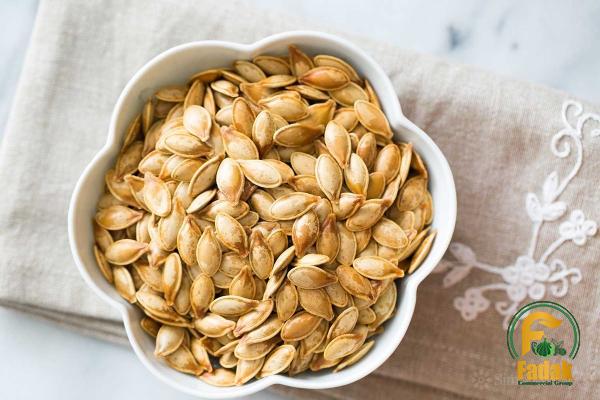
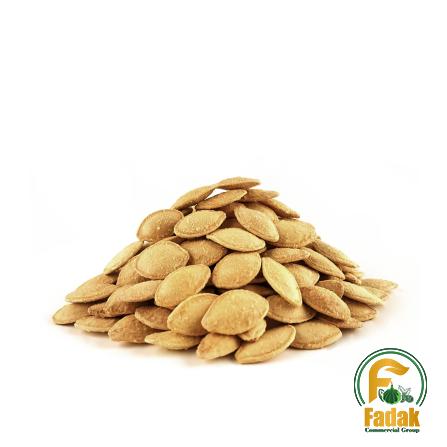

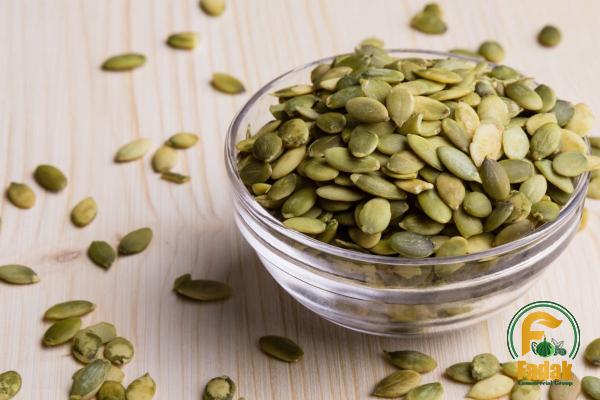
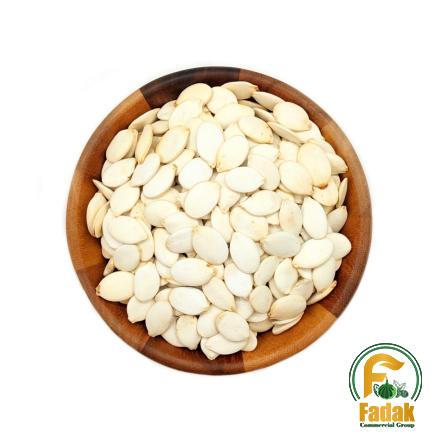
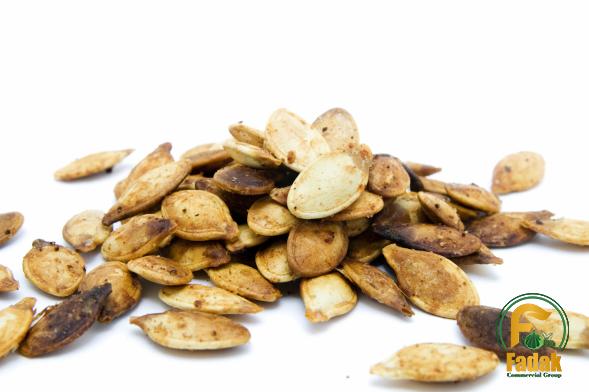
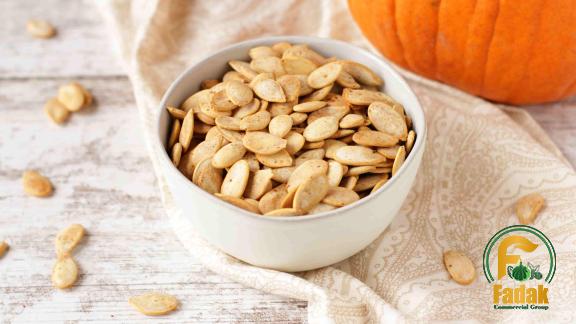
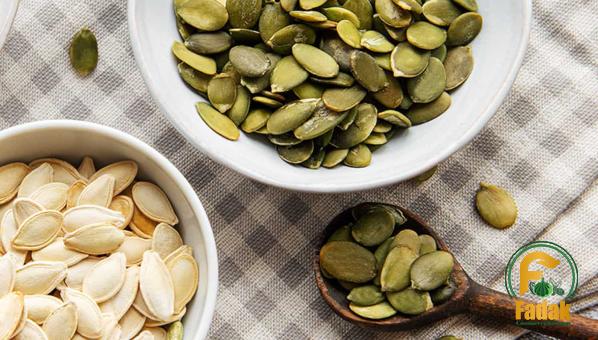

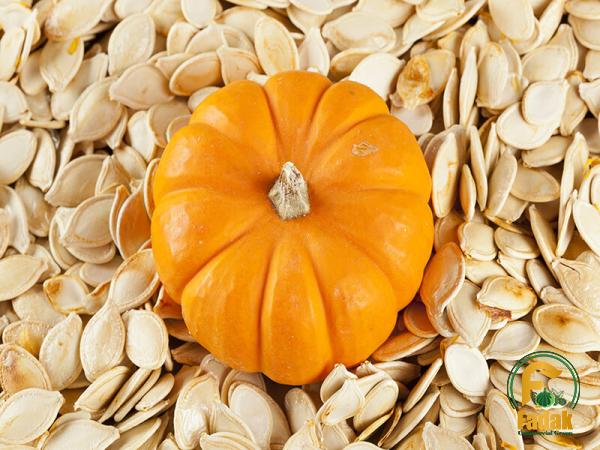
Your comment submitted.